The Important Half: John Lennon, ‘Julia’ and Singing to Reach
by Colin FlemingJohn Lennon claimed that during his time in the Beatles, he only wrote two honest songs, those being 1965’s “Help!” and 1967’s “Strawberry Fields Forever.”
How often do we ever shout for help? We ask for help, but unless we’re in immediate danger, the word is rarely utilized with the exclamation point, which speaks to the head space where John Lennon found himself mid-way through the 1960s. He was a proud man sufficiently in need of assistance that he had to declare as much at the top of his voice. “Strawberry Fields Forever” was a different sort of cry, an encapsulating question of identity: Who am I? Why I am I different? Is this good or bad?
But Lennon also wrote “Julia,” a White Album track that resonates as perhaps the most nakedly personal Beatles number of all. “Strawberry Fields Forever” and “Help!” are dressed up, you could say: one with a surging beat, the other in psychedelia-statured existentialism. “Julia” is something else, though: soft, laid bare for all to see and hear.
The Julia of the title is Julia Lennon, John’s late mother, though it’s more accurate to say that the title was sourced from her name, for the song travels beyond the contours of biography. She was the mother who didn’t outrightly want him as a child to raise and instead entrusted him to the care of her sister, Mimi. Julia became John’s fun-loving friend, perpetually in pursuit of the next laugh, in a confusing relationship that cut into Lennon the boy and later on Lennon the man.
He had a mother who was more big sister than parent, fuzzy-to-nonexistent boundaries, and a maw-like hole of self-doubt as to why she didn’t want to be the mother to him that mothers are supposed to be. Anyone would question—or blame—themselves, and for all of his bluster, John Lennon was no different.
Then, on July 15, 1958, with the teenaged Lennon finally finding surer footing in the context of this untraditional relationship, Julia was run down by a car not far from Mimi’s front door, dead at the age of 44, while her son was out.
The site of the accident was visible from John’s window, so his aunt never told him where, exactly, it had happened, but the boy pieced it together, and to a composite of things to haunt him was added that of roadside propinquity.
Mothers never really leave us, even when they leave this world, or if they’ve left their child. What a mother is, what a mother should be, and sometimes what a mother isn’t, lodges inside.
We can talk tough, but the truth is, it impossible not to care about one’s relationship to one’s mother. More than any other relationship, we see it as commentary on who we most fundamentally are. The mother is the first person we meet, the person from whom we emerged; something about our mother is always emerging within us.
Lennon would explore those ideas—and he’d scream some of them even louder than he declaimed the words of “Help!”—a couple years after the release of “Julia” on 1970’s John Lennon/Plastic Ono Band, which, in its opening track, “Mother,” introduced anger to Lennon’s mother mix, while “Julia” numbers among his most peaceful songs, along with “Across the Universe” and “In My Life.”
Those are honest songs, too, because their author was committed to them in a way that he wasn’t to “All You Need Is Love,” which Lennon no more believed than he did that Gene Vincent wasn’t a ferocious rocker.
To say that the narrator of a timeless song is the actual person who wrote that song is to cut into its scope. Historicism is often a form of projection when it comes to art. For a song to last, it has to be more than, “This is about me.” It needs to be about everyone, but in such a way that it feels as personal—to you—as the most important secret you ever told anyone else or might someday.
That’s the daunting challenge and few have ever been able to consistently do it, but that was Lennon’s art, the melding of the intimate and the universal, which is rather different than the trumpeting of the autobiographical.
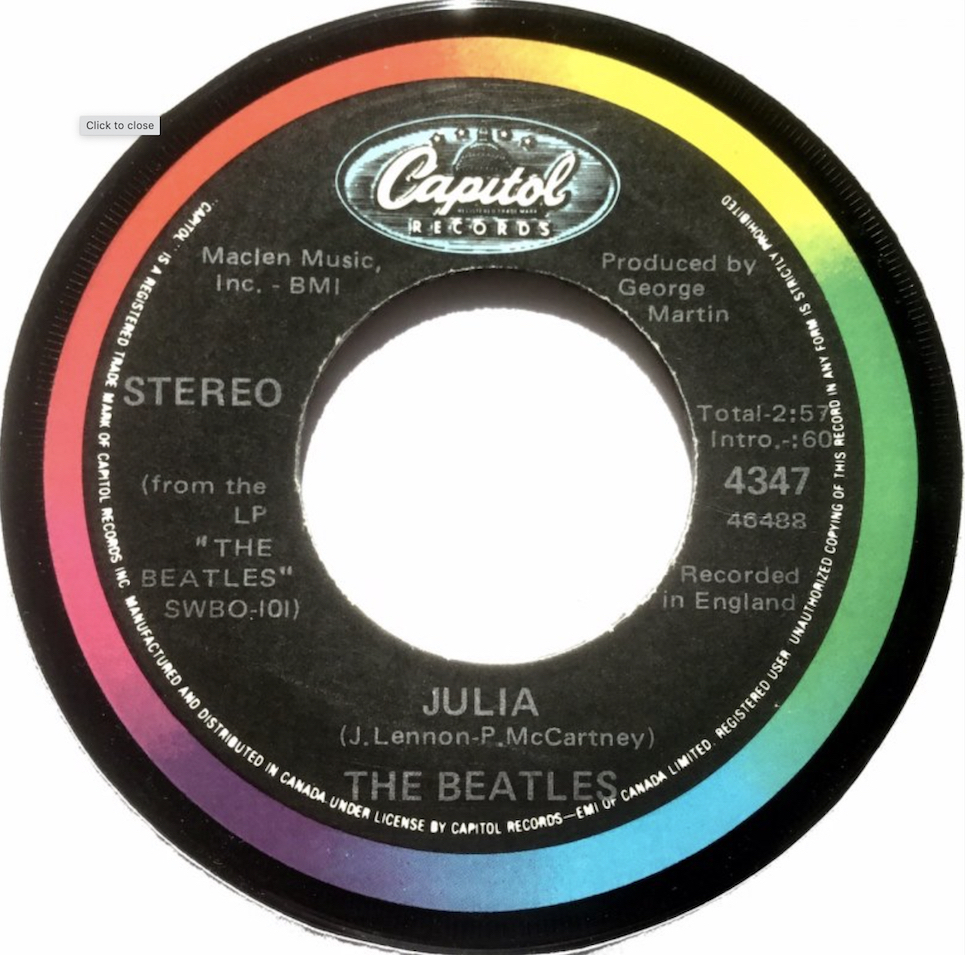 A song like “Julia” is one that the biographically informed listener can reference in regards to an actual mother cut down in life’s prime, but it has no more of a finite ending point than mothers themselves do. It’s less about mothers—the word doesn’t even feature in the song—and more about people who have had mothers and sought to understand a first and fundamental connection, whether intact or otherwise; a connection that is also about one’s relationship with one’s self.
A song like “Julia” is one that the biographically informed listener can reference in regards to an actual mother cut down in life’s prime, but it has no more of a finite ending point than mothers themselves do. It’s less about mothers—the word doesn’t even feature in the song—and more about people who have had mothers and sought to understand a first and fundamental connection, whether intact or otherwise; a connection that is also about one’s relationship with one’s self.
The song begins with a line that underscores why art is attempted: “Half of what I say is meaningless, but I say it just to reach you,” Lennon sings, before concluding the statement with the name Julia as this recipient of what we can call the important half.
The important half—or whatever the fraction may be—is what gets through and isn’t lost to closed ears and eyes, or what someone else presumes based upon their own experiences, or what baggage blocks out, or that distractions impede.
It is so hard to get anything across to anyone so that they completely understand what we wish them to. The artist finds these other means, but they are means of positioning rather than telling.
Related: Our Album Rewind of John Lennon/Plastic Ono Band
A seat is provided closest to the stage, so that when the veil is pulled back on the mysteries of human life and interaction and nature, that person in that chair may see. There’s no process of absolutes in which everything is imparted. Hence, the singer’s admittance of meaninglessness: that which will not find its way to the intended recipient. But an at-all-costs effort is undertaken to reach regardless. To bridge gaps, span worlds, even when it’s threads—or a handful of notes—that serve as the walkway over the abyss below. All great artists are themselves mothers of a sort.
We have four available versions of “Julia”: the official White Album cut, the demo recorded in May 1968 at George Harrison’s Esher residence, and two studio rehearsals.
“Julia” is performed by Lennon and his guitar, his voice double-tracked on the demo and the album. The song isn’t a chronicle of a past and tragedy and loss, but rather an associative homage, in which feelings are tapped into and what is sourced from them radiates outwards.
Listen to the official released version from the White Album
Lennon remarked that he lost his mother twice: when she declined to raise him, and then with her death. Lennon’s own life was marked by great loves: for Julia, Stuart Sutcliffe, Paul McCartney and Yoko Ono. That was a love with no bounds, an all-subsuming form of affection.
Fittingly, Ono herself appears in this song about Lennon’s mother that also transcends the “merely” maternal. She—or what this form of love represents—is the “ocean child” of the lyric that summons the singer with her call. A call to what? Away from this dream-space of the past? Or to a discussion as to what occupies the singer’s mind? A talk conceivably of this lost mother.
As the singer says, “Julia” is “the song of love,” and the definite article matters. Though we have all manner of labels for what we ascribe as love’s assorted subcategories, love is a free-flowing totality. We enter into its current and are swept along, having given ourselves over to a power beyond us.
Lennon’s vocal delivery augments the concept. There’s a psychedelic component in certain phrases—“Her hair of floating sky is shimmering”—but this is no hallucinogenic odyssey; we’re in the natural world, where nature reveals her meaning via an unpredictable visual artistry that informs our methods of perception, both outwardly and inwardly.
“Julia” is a brave song, because in that delivery we hear a singer willing to be transported, who need not dictate the laws of his own artistry. Lennon could make that which was gentle resonate with cyclonic power. He didn’t do it frequently, but some of his most sublime vocal moments involve the deployment of what can be thought of as his river voice, where one state of being flows into another, as if the singer has figured out the interconnectedness of it all.
The Esher demo is the stone at the bottom of the lake that has only recently gotten there. It’s not a smooth stone yet. One wonders what Lennon’s bandmates thought when hearing the number at Harrison’s house on that day. The Beatles had decided to let their hair down with each other to a more pronounced degree than before on an album. It was like they agreed collectively that they’d each show their most naked selves, and no judgment would be passed.
Listen to the Esher demo of “Julia”
Sometimes that vulnerability took the form of trying out a style of music, as with McCartney and “Helter Skelter.” Other times it was visiting a place that the people who knew one of these men best—like the other three knew Lennon—had accepted was a very hard place for that individual to go to.
Lennon’s acoustic guitar was an integral part of the sound of A Hard Day’s Night. It’s the underrated component of that album’s basso continuo, but he didn’t have many other key acoustic guitar contributions, which also makes “Julia” notable.
There’s an innocence in that guitar accompaniment on the White Album version of the song—clean earnestness. The guitar, like the voice, is of that riverine quality, and they join as one. On a take of “Don’t Let Me Down,” Lennon asked Starr for a formidable racket on the drums so that he had the courage to come screaming in. On “Julia,” the guitar fosters emotional valor. Like any great work of art, “Julia” is a risk, one which Lennon’s accompaniment makes it easier to take.
The rehearsal versions of the song paradoxically convey even more. With each, Lennon’s voice is as vulnerable and open as it ever got. The White Album version of “Julia” is chary by comparison, when on its own it’s anything but.
Listen to an in-progress version of the song from the Beatles’ Anthology 3 collection
There are four other instances of Lennon utilizing a version of this voice—the first take of “Yes It Is,” when he’s not “officially” singing and is instead laying down a guide vocal; the sixth take of “Across the Universe,” a song in which words, phrases, ideas flow into other words, phrases, ideas to such a degree that the lyric makes official note of it; the first take of “Strawberry Fields Forever” in all of its ethereal introspection; and the instantly haunting, shake-you-by-the-soul first take of “A Day in the Life.”
What do these performances have in common? They’re early iterations, of course. Pre-versions. They’re less official, more like a near-whispered conversation with a cherished friend late at night than the transcribed statement in court.
“Is it better standing up, do you think?” Lennon asks before beginning the first of the rehearsal versions of “Julia.” He doesn’t know whether to sing the song sitting or standing. This is no regular run-through. The positioning of the body matters, which is the case when we are trying to get the most out of ourselves.
“It’s very hard to sing this, you know,” Lennon adds, conveying all sorts of meaning in the admission.
What follows is four minutes of descent into—and inhabitation of—an oneiric world where the past joins with the present, and the future somehow circles back behind both, as a confluence of human identity advances.
If Lennon didn’t include this song as one of his honest compositions, it would seem to be because “Julia” was so real and so authentic, that neither box nor label would work. Which isn’t to diminish “Help!” and “Strawberry Fields Forever.” They were likely easier to cite and discuss, whereas “Julia” was left alone as music to reach. And that was all that mattered.
Listen to two rehearsals of “Julia”

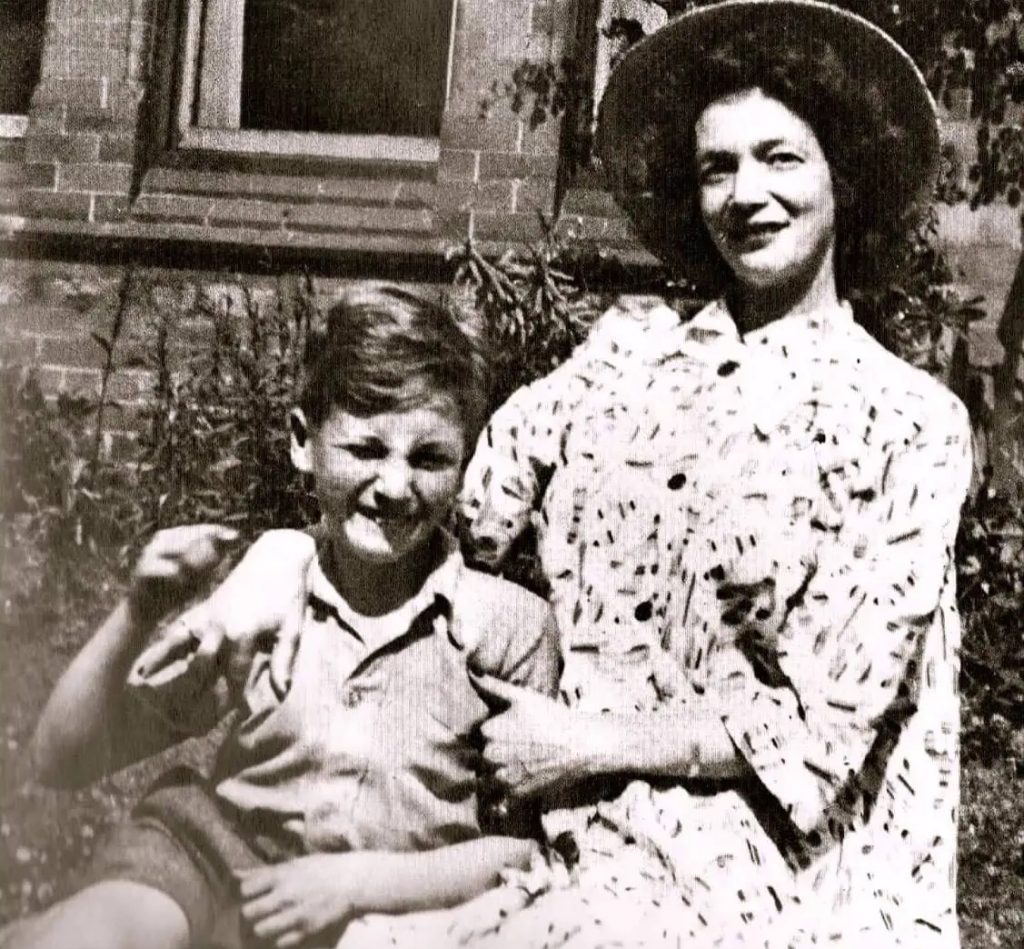
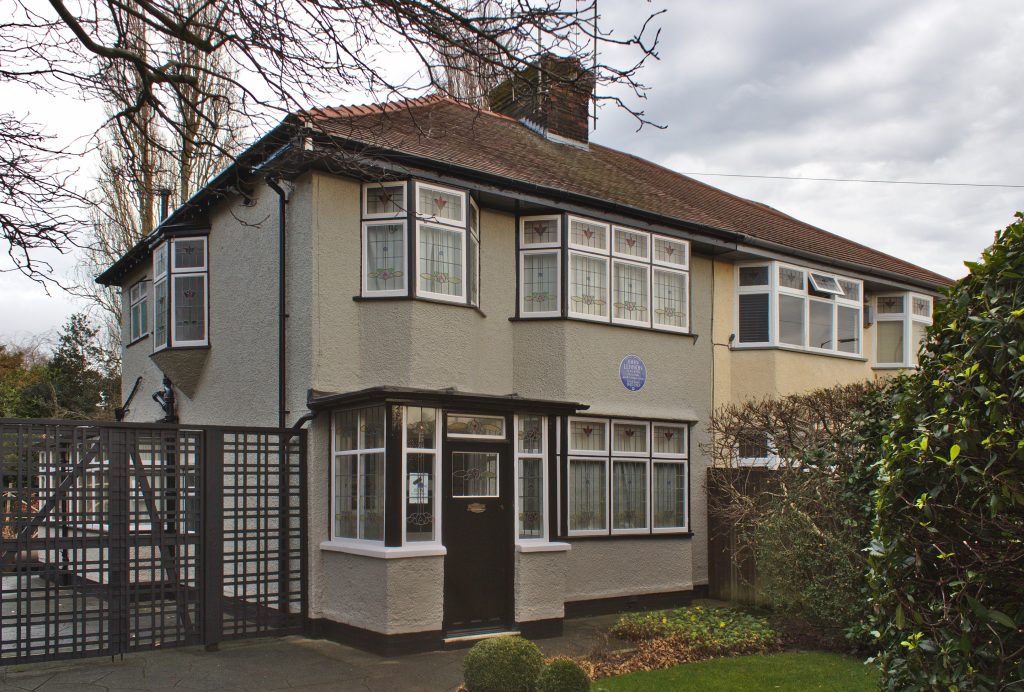

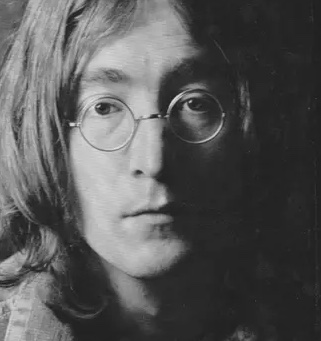
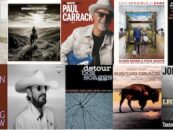


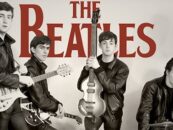

No Comments so far
Jump into a conversationNo Comments Yet!
You can be the one to start a conversation.